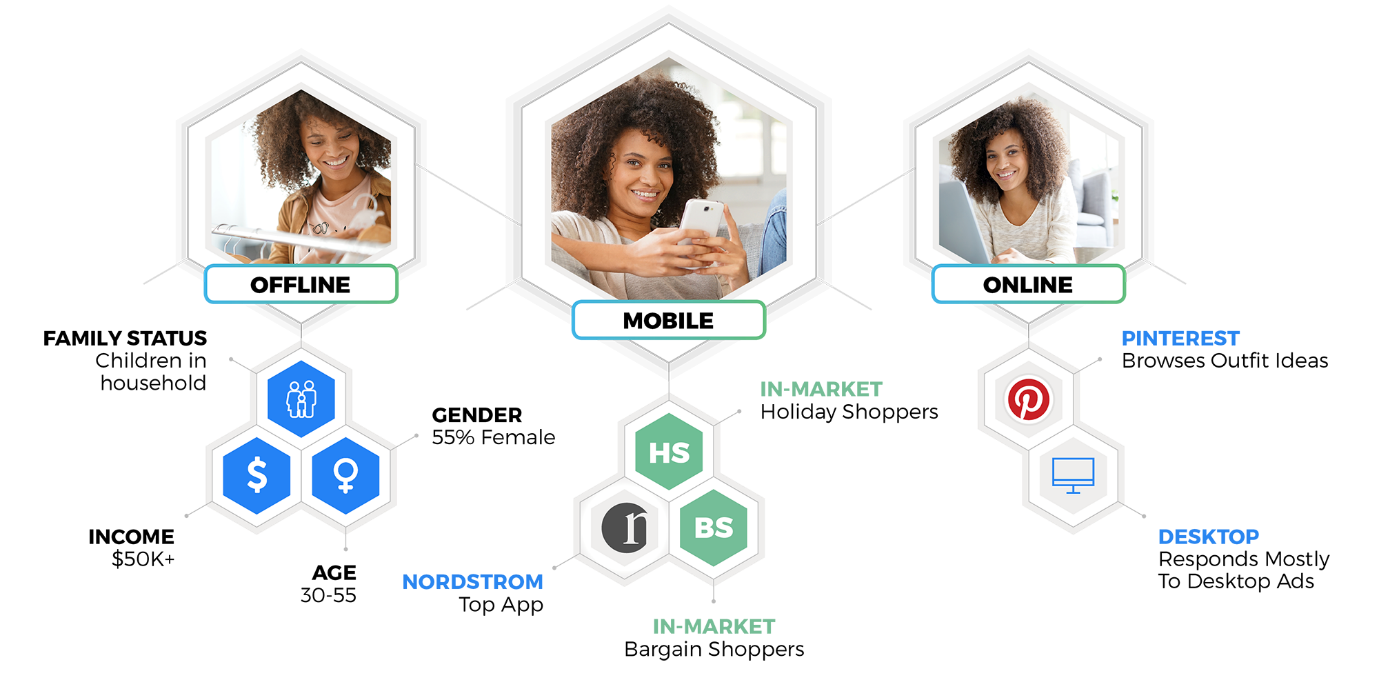Data is everywhere. It isn’t the presence of data that’s important instead how you acquire and analyze it for your business. Big data has been doing exceptionally well for marketers that have learned how to use it.
A CMO of a US insurance company, according to McKinsey & Company, used big data to achieve the marketing productivity growth rate of 15% per year for four years in a row with the same marketing budget each year.
McKinsey analysis of more than 250 companies for more than 5 years revealed that companies that make marketing and sales decisions on the basis of big data see up to 20% higher marketing ROI. Tailored marketing campaigns, however, increase digital marketing ROI by a whopping 250%.
If you own a business, an ecommerce store, or if you’re planning to start an online clothing store or you’re about to launch your startup, read on to fully understand how big data can improve digital marketing ROI of your business.
1. Understanding target audience

Big data analysis helps digital marketers better understand their target audience. This helps you create better buyer personas and ideal customer profiles.
You can combine and merge audience data from several sources like offline, online, and mobile.
When you get complete access to your target audience data, creating highly targeted content and marketing campaigns get easier.
Netflix is using data from its millions of global users to analyze viewing behaviors and habits across continents, countries, states, and cities. As a result, Netflix is buying new programs that its customers are in love with.
When you know your customers, their needs, their interests, and understand the way how they behave and react to various products and content, making them hook to your business becomes easier.
2. Customized marketing campaigns
One of the common reasons why marketing campaigns fail is because the message isn’t relevant. In other words, if your marketing campaign isn’t personalized, it will most likely fail.
For instance, if your diaper ads are being shown to singles or if email campaign to buy a new product is sent to subscribers who have already purchased the same product.
This is not something you’d like to do.
Big data helps you create highly specific marketing campaigns with personalized ad copy, offers, and landing pages on right channels. Sears consolidated data related to customers, products, sales, and marketing campaigns to reduce its time to launch a new marketing campaign from 8 weeks to a single week.
Twiddy’s pricing recommendations to homeowners is a nice example of data-driven customized marketing campaigns.
The marketing team at Twiddy started monitoring how rental volume and demand shifted from week to week. The trend was analyzed for weeks before they started showing pricing recommendations to homeowners on the basis of several identified variables such as home size, season, market situation, etc. They allowed their customers to experiment with pricing for possible low-demand periods in advance. It helped customers and Twiddy’s portfolio increased by 10%.
Collect data from all the channels and start personalizing marketing messages to boost ROI.
3. Better user experience
Setting up customized marketing campaigns don’t deliver if your landing page has a poor user experience. It hurts when paid visitors leave your website without buying or subscribing.
This was happening with Fairmont Hotels and Resorts. They were driving traffic to their website from Facebook ads but visitors were leaving the website without even going at the booking stage. They used data from multiple channels and sources to understand visitor habits, travel history, device, average income, etc. This helped them optimize their website for better conversions. Better website experience increased bookings.
At the end of the day, it all comes down to how user-friendly your landing page is. This supercharges your marketing campaigns and boosts conversions.
4. Better marketing budget management
You don’t have an unlimited marketing budget to deliver results. In fact, securing enough marketing budget is the third biggest challenge that digital marketers face.
When getting enough of it is challenging, you have to manage budget smartly. Thanks to big data. It helps you maximize ROI by investing your marketing budget on right channels, target market, and products.
According to MIT Technology Review: “The numbers show how much lift each data point provided for each ad in each channel. With that data, marketers can make better decisions about how to allocate their ad budgets. Indeed, the analytics themselves will identify the smart choices.”
Channel that delivers the highest ROI should be scaled. Campaigns with poor CTR and conversion rate should be abandoned. When you have access to data, you know how to do it, right?
5. Analysis-based marketing decisions
Big data helps marketers make right choices at the right time. Decision-making is at the center of marketing ROI. What could be better than letting data drive you?
This type of decision-making is:
- Accurate
- Real-time
- Timely
- Result-oriented
- Pro-active
- Productive
- Well-managed
At the same time, it drives accuracy, customer segmentation, and other benefits.
For instance, US Xpress is a leading transportation solution provider that collects data from thousands of different elements such as truck engine operation, fuel consumption, GPS, etc. and use this data to optimize fleet management and boost productivity. This helps them save millions in operating cost each year.
Similar results can be obtained when marketing decision-making is powered by big data.
Are you ready to boost marketing ROI with big data?
It all comes down to how and what data you use to fuel digital marketing. Choose the right data sets and use appropriate analytic tools to make sense of the data.
It isn’t important how much data you have access to, the thing that really matters is how you analyze and use that data.